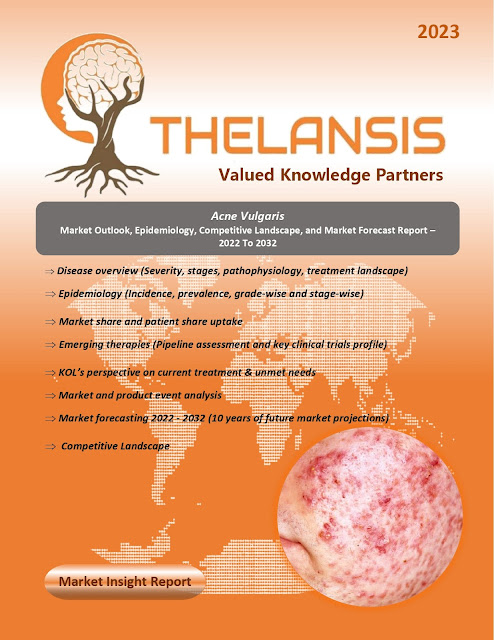Diabetic Macular Edema (DME) – Market outlook, Epidemiology, Competitive Landscape, and Market Forecast Report – 2020 To 2030
In DME,
chronic hyperglycemia causes an up-regulation of vascular endothelial growth
factor (VEGF), thus increasing vascular permeability and angiogenesis. While
the underlying pathophysiology of DME is VEGF mediated, there is a growing body
of evidence suggesting that inflammatory mediators are also partly responsible
and that those mediators contribute substantially to the vascular permeability
and edema present in DME. The most common cause of vision loss from DR is DME,
which can occur at any stage of DR and is characterized by edema and retinal
thickening, which may also include hard exudates. As the earliest stages of DME
are usually asymptomatic, individuals with DM are often unaware they have
developed such complications. Symptoms are somewhat dependent on the location
of the edema within the retina; non–center-involved macular edema is rarely
symptomatic. However, once the edema spreads to encompass the central macula,
patients generally experience progressive vision loss from weeks to months
after the initial symptom.
The global
prevalence of DME varies 4.6% to 7.8% among diagnosed diabetic retinopathy
patients.
The competitive
landscape of Diabetic Macular Edema (DME) includes country-specific approved and
pipeline therapies. Any asset/product-specific designation or review and
Accelerated Approval are tracked and supplemented with analyst commentary.
KOLs insights of Diabetic
Macular Edema (DME) across 8 MM market from the center of Excellence/ Public/
Private hospitals participated in the study. Insights around current treatment
landscape, epidemiology, clinical characteristics, future treatment paradigm,
and Unmet needs.
Diabetic
Macular Edema (DME) Market
Forecast: Patient Based Forecast Model (MS. Excel Based Automated
Dashboard) which Data Inputs with sourcing, Market Event, and Product Event,
Country specific Forecast Model, Market uptake and patient share uptake,
Attribute Analysis, Analog Analysis, Disease burden, and pricing scenario,
Summary, and Insights.
S. No Asset Company Stage
1 MYL-1701P and Eylea Mylan
Inc. Phase 3
2 Intravitreal Aflibercept Regeneron
Pharmaceuticals Phase 2
3 EXN407 Exonate
Limited Phase 1/2
4 OCS-01 Oculis Phase 2/3
5 OPT-302 and Aflibercept Opthea
Limited Phase 1/2
6 SF0166 SciFluor Life
Sciences, Inc. Phase 1/2
7 Teprotumumab River
Vision Development Corporation Phase 1
8 MHU650 Novartis
Pharmaceuticals Phase 1
9 KSI-301 Kodiak
Sciences Inc Phase 3
10 Vabsymo (Faricimab) Hoffmann-La
Roche Phase 3
Continued



%20Market%20Outlook%20and%20Forecast.webp)
Comments
Post a Comment